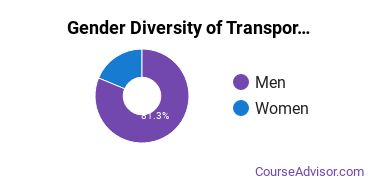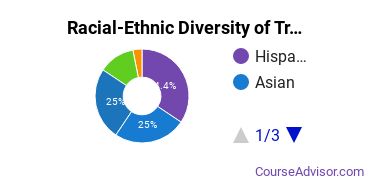Transportation & Materials Moving at Sacramento City College
Sacramento City is located in Sacramento, California and approximately 20,027 students attend the school each year.
Want to know more about the career opportunities in this field? Check out the Careers in Transportation & Materials Moving section at the bottom of this page.
Featured Sacramento City College Programs
Learn about start dates, transferring credits, availability of financial aid, and more by contacting the universities below.
BS in Operations Management - Logistics & Transportation
Enhance your Bachelor of Science in Operations Management with a concentration in Logistics and Transportation at Southern New Hampshire University.
Sacramento City Transportation & Materials Moving Degrees Available
- Associate’s Degree in Transportation & Materials Moving
Featured Sacramento City College Programs
Learn about start dates, transferring credits, availability of financial aid, and more by contacting the universities below.
BS in Operations Management - Logistics & Transportation
Enhance your Bachelor of Science in Operations Management with a concentration in Logistics and Transportation at Southern New Hampshire University.
Sacramento City Transportation & Materials Moving Rankings
Transportation & Materials Moving Student Demographics at Sacramento City
Take a look at the following statistics related to the make-up of the transportation & materials moving majors at Sacramento City College.
Sacramento City Transportation & Materials Moving Associate’s Program

The majority of those who receive an associate's degree in transportation & materials moving at Sacramento City are white. Around 54% fell into this category, which is below average for this degree.
The following table and chart show the race/ethnicity for students who recently graduated from Sacramento City College with a associate's in transportation & materials moving.

| Race/Ethnicity | Number of Students |
|---|---|
| Asian | 1 |
| Black or African American | 2 |
| Hispanic or Latino | 3 |
| White | 7 |
| International Students | 0 |
| Other Races/Ethnicities | 0 |
Concentrations Within Transportation & Materials Moving
Transportation & Materials Moving majors may want to concentrate their studies in one of these areas. The table shows all degrees awarded in this field awarded for all degree levels at Sacramento City College. A concentration may not be available for your level.
| Concentration | Annual Degrees Awarded |
|---|---|
| Air Transportation | 32 |
Related Majors
Related Programs
Learn about other programs related to Sacramento City College that might interest you.
BS in Operations Management - Logistics & Transportation
Enhance your Bachelor of Science in Operations Management with a concentration in Logistics and Transportation at Southern New Hampshire University.
Careers That Transportation & Materials Moving Grads May Go Into
A degree in transportation & materials moving can lead to the following careers. Since job numbers and average salaries can vary by geographic location, we have only included the numbers for CA, the home state for Sacramento City College.
| Occupation | Jobs in CA | Average Salary in CA |
|---|---|---|
| Heavy and Tractor-Trailer Truck Drivers | 138,380 | $47,300 |
| Light Truck or Delivery Services Drivers | 111,100 | $40,110 |
| Operating Engineers and Construction Equipment Operators | 28,110 | $73,130 |
| Transportation, Storage, and Distribution Managers | 18,990 | $107,550 |
| Flight Attendants | 15,920 | $51,990 |
References
*The racial-ethnic minorities count is calculated by taking the total number of students and subtracting white students, international students, and students whose race/ethnicity was unknown. This number is then divided by the total number of students at the school to obtain the racial-ethnic minorities percentage.
More about our data sources and methodologies.

